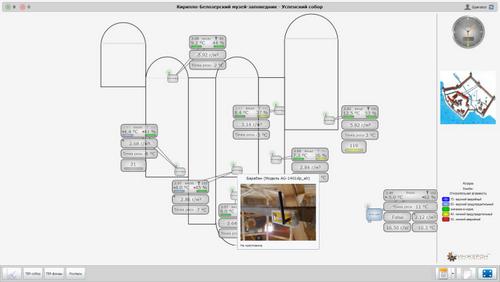The wireless control system of temperature and humidity conditions “Wi-climate™” was launched in the Dormition Cathedral of the Kirillo-Belozersky Museum-Reserve in March 2013. It consisted of one coordinator, 5 routers and 13 wireless temperature and air humidity meters.

The system has been significantly expanded recently. Now they will control the rooms in the Refectory and the House of the Father Superior where the museum exhibitions and expositions are located. Two networks were additionally made and 34 metering devices were installed for it. The new meters have light sensors. It is really important as the lighting level is a serious factor that is taken into account for preservation of such sensitive materials as fabric or paper.

![]() Information about the temperature and humidity conditions goes into the computers of the museum specialists across the local area network. Thus, they can monitor the storage conditions of the exhibits and the system availability and can optimize the operating mode of the conditioning and ventilation systems without leaving the jobsite.
Information about the temperature and humidity conditions goes into the computers of the museum specialists across the local area network. Thus, they can monitor the storage conditions of the exhibits and the system availability and can optimize the operating mode of the conditioning and ventilation systems without leaving the jobsite.







